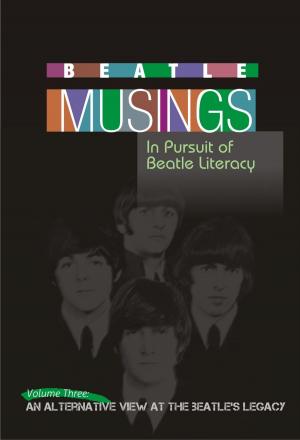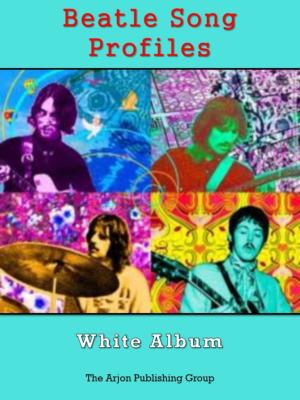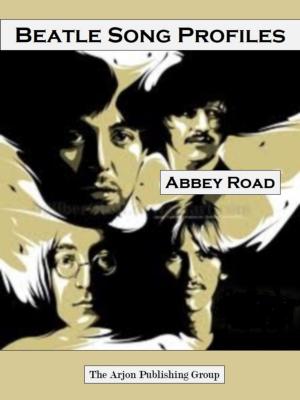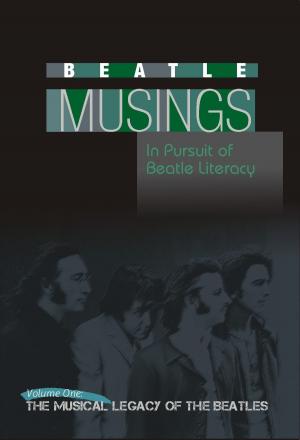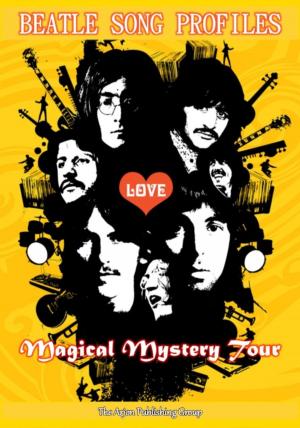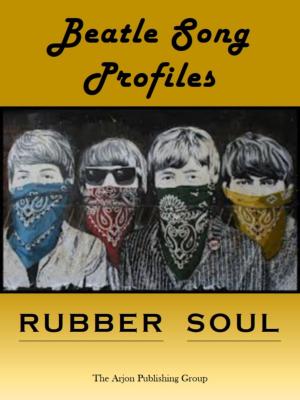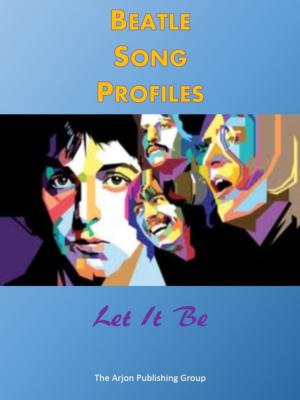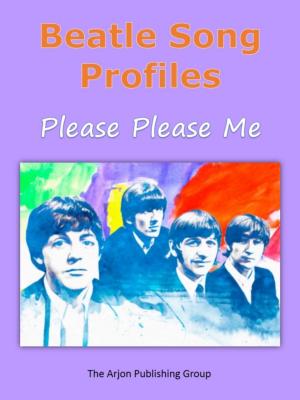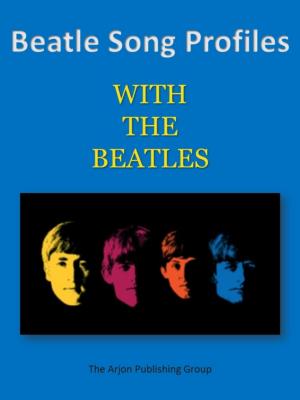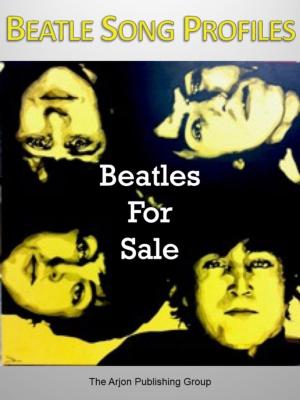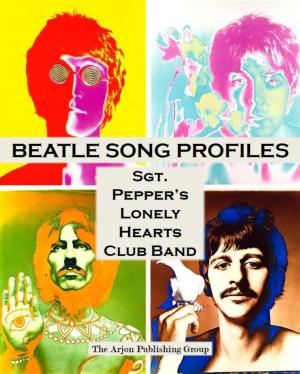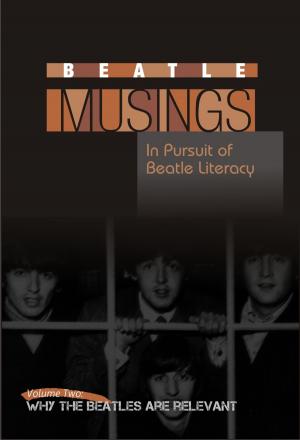Beatle Song Profiles: Revolver
Nonfiction, Entertainment, Music, Business & Technical, Songwriting, Pop & Rock, Popular, Music Styles| Author: | Joel Benjamin | ISBN: | 9789657570173 |
| Publisher: | Arjon Publishing | Publication: | July 30, 2012 |
| Imprint: | Language: | English |
| Author: | Joel Benjamin |
| ISBN: | 9789657570173 |
| Publisher: | Arjon Publishing |
| Publication: | July 30, 2012 |
| Imprint: | |
| Language: | English |
Each of the 14 songs from Revolver are “profiled” in this volume of Beatle Song Profiles.
Beatle Song Profiles are concise commentaries on every Beatle song. The song profiles describe the song’s origins and inspiration, what The Beatles themselves said about it, what was unique about the music and/or production of the arrangement or vocals, and the deeper meaning of the lyrics.
Beatle Song Profiles is a unique educational tool to enable readers to learn about every song on all 12 albums The Beatles recorded.
Sample song profile from Revolver
Eleanor Rigby
Eleanor Rigby it was the only Beatle song up where no one in the group played any instrument. As McCartney sings double-tracked lead vocal and Harrison and Lennon contribute back-up harmonies. The music is from a pair of string quartets.
McCartney says he wrote 80% of the song. In 1974, Lennon claimed:
“I wrote a good deal of the lyrics, about 70 percent. The first verse was his and the rest are basically mine.”
McCartney responded to Lennon’s assertion:
“Yeah, about a half a line.”
There are numerous versions of what inspired the writing of “Eleanor Rigby.” The first is that McCartney says he combined the first name of Eleanor Bron who was the lead actress in Help! with Rigby, a last name from a wine store in Bristol. Another version is that McCartney noticed a sign in a London with the name Eleanor Bygraves on it.
Still yet another was that in the Woolton Cemetery in Liverpool where he and John used to hang out there is a gravestone to an Eleanor Rigby and a person called McKenzie. It has also been suggested “Father McKenzie” is ‘Father’ Tommy McKenzie of the Northwich Memorial Hall in Norwich, England.
String quartets were traditionally recorded with just one or two microphones placed high, several feet up in the air so the sound of the bows scraping couldn’t be heard. But with Paul’s directive in mind, engineer Geoff Emerick decided to close-mic the instruments which were a new concept. The microphones were placed just an inch or so from each instrument. The impact of George Martin’s wintry string octet arrangement was transfixing.
Mark Hertsgaard writes in his 1995 book A Day In The life: The Music and Artistry of The Beatles of the staccato scraping of violins that marches the beat of “Taxman” forward so insistently is an example of ‘musical architecture’:
“Eleanor Rigby is an example of a Beatle tune that is catchy enough to sing in the shower, yet there is far more going on within the song- more embellishments, more layers, textures, and dimensions of ‘unusual’ sounds- than in most popular music.”
McCartney borrowed techniques from classical fields to enhance his music- such as modulation- moving a piece of music’s center of gravity from one key area to another. It is the process that pieces of music go through to change the tonal center from one key note to another. McCartney was intrigued and became a master of the device of mid-song key changes where mood and color interchange- almost by magic.
The narrator’s question: “Where do they all belong” was never answered in the song. Yet it clearly condemns the Catholic Church as this parish reeks of scandal. The speaker tells us that the priest has forsaken God and that Eleanor should have been saved as she was buried in the church along with her name. So she must have committed a mortal sin.
The meaning of the composition could also be that it was a reference to the inability of the church to ease the suffering of its people. Father Mackenzie is so far removed that “no one comes near.” Even as Eleanor is suffering in her loneliness, the church (personified in father Mackenzie) does nothing to help.
Each of the 14 songs from Revolver are “profiled” in this volume of Beatle Song Profiles.
Beatle Song Profiles are concise commentaries on every Beatle song. The song profiles describe the song’s origins and inspiration, what The Beatles themselves said about it, what was unique about the music and/or production of the arrangement or vocals, and the deeper meaning of the lyrics.
Beatle Song Profiles is a unique educational tool to enable readers to learn about every song on all 12 albums The Beatles recorded.
Sample song profile from Revolver
Eleanor Rigby
Eleanor Rigby it was the only Beatle song up where no one in the group played any instrument. As McCartney sings double-tracked lead vocal and Harrison and Lennon contribute back-up harmonies. The music is from a pair of string quartets.
McCartney says he wrote 80% of the song. In 1974, Lennon claimed:
“I wrote a good deal of the lyrics, about 70 percent. The first verse was his and the rest are basically mine.”
McCartney responded to Lennon’s assertion:
“Yeah, about a half a line.”
There are numerous versions of what inspired the writing of “Eleanor Rigby.” The first is that McCartney says he combined the first name of Eleanor Bron who was the lead actress in Help! with Rigby, a last name from a wine store in Bristol. Another version is that McCartney noticed a sign in a London with the name Eleanor Bygraves on it.
Still yet another was that in the Woolton Cemetery in Liverpool where he and John used to hang out there is a gravestone to an Eleanor Rigby and a person called McKenzie. It has also been suggested “Father McKenzie” is ‘Father’ Tommy McKenzie of the Northwich Memorial Hall in Norwich, England.
String quartets were traditionally recorded with just one or two microphones placed high, several feet up in the air so the sound of the bows scraping couldn’t be heard. But with Paul’s directive in mind, engineer Geoff Emerick decided to close-mic the instruments which were a new concept. The microphones were placed just an inch or so from each instrument. The impact of George Martin’s wintry string octet arrangement was transfixing.
Mark Hertsgaard writes in his 1995 book A Day In The life: The Music and Artistry of The Beatles of the staccato scraping of violins that marches the beat of “Taxman” forward so insistently is an example of ‘musical architecture’:
“Eleanor Rigby is an example of a Beatle tune that is catchy enough to sing in the shower, yet there is far more going on within the song- more embellishments, more layers, textures, and dimensions of ‘unusual’ sounds- than in most popular music.”
McCartney borrowed techniques from classical fields to enhance his music- such as modulation- moving a piece of music’s center of gravity from one key area to another. It is the process that pieces of music go through to change the tonal center from one key note to another. McCartney was intrigued and became a master of the device of mid-song key changes where mood and color interchange- almost by magic.
The narrator’s question: “Where do they all belong” was never answered in the song. Yet it clearly condemns the Catholic Church as this parish reeks of scandal. The speaker tells us that the priest has forsaken God and that Eleanor should have been saved as she was buried in the church along with her name. So she must have committed a mortal sin.
The meaning of the composition could also be that it was a reference to the inability of the church to ease the suffering of its people. Father Mackenzie is so far removed that “no one comes near.” Even as Eleanor is suffering in her loneliness, the church (personified in father Mackenzie) does nothing to help.


